Back in 2020, David Seager explained ILM‘s work on Terminator: Dark Fate. He then worked on We Can Be Heroes. Today he tells us about his work on Loki.
George Kuruvilla has been working in visual effects for over 10 years. He worked at Cinesite, Rhythm & Hues, Sony Pictures Imageworks before joining ILM in 2014. His filmography includes films such as Warcraft, Kong: Skull Island, Thor: Ragnarok and Aladdin.
Back in 2013, Dan Mayer told us about Method Studios‘ work on A Good Day To Die Hard. He then joined the ILM teams in 2014 and worked on films like Captain America: Civil War, Black Panther, Captain Marvel and The Mandalorian.
David Crispino started his career in visual effects in 2007. He then worked at various studios such as MPC and Blue Sky Studios before joining ILM in 2017. He has worked on films such as Suicide Squad, Aladdin, Star Wars: Episode IX – The Rise of Skywalker and The Mandalorian.
How did you and ILM get involved on this show?
David Seager (DS) // Early on in the process, ILM generated a couple of concept test shots for the cloud creature Alioth. These tests were rapidly developed 3D FX tests designed to match some of the initial concept art of Alioth.
How was this new collaboration Overall VFX Supervisor Dan DeLeeuw?
DS // Over the course of the entire production of Loki we partnered with both Dan Deleeuw and Brad Parker in the role of the overall VFX supervisor. We did most of our development and a large portion of the shot work with Dan before he moved on to work on his next project. Brad was on the show alongside Dan for the majority of the shot work and oversaw the final stages of production. Both Dan and Brad were great partners and we felt very trusted and empowered to execute our body of work.
What were his expectations and approach about the visual effects?
DS // The great thing about working with Dan is that he is a veteran when it comes to the MCU. He is fully versed in how they like to work, what types of presentations that they respond well to, and he has an existing relationship with the entire team at Marvel. Moreover, Dan was very trusting and he put a lot of faith in our team. I find that this can have a wonderful impact on the team because they feel empowered.
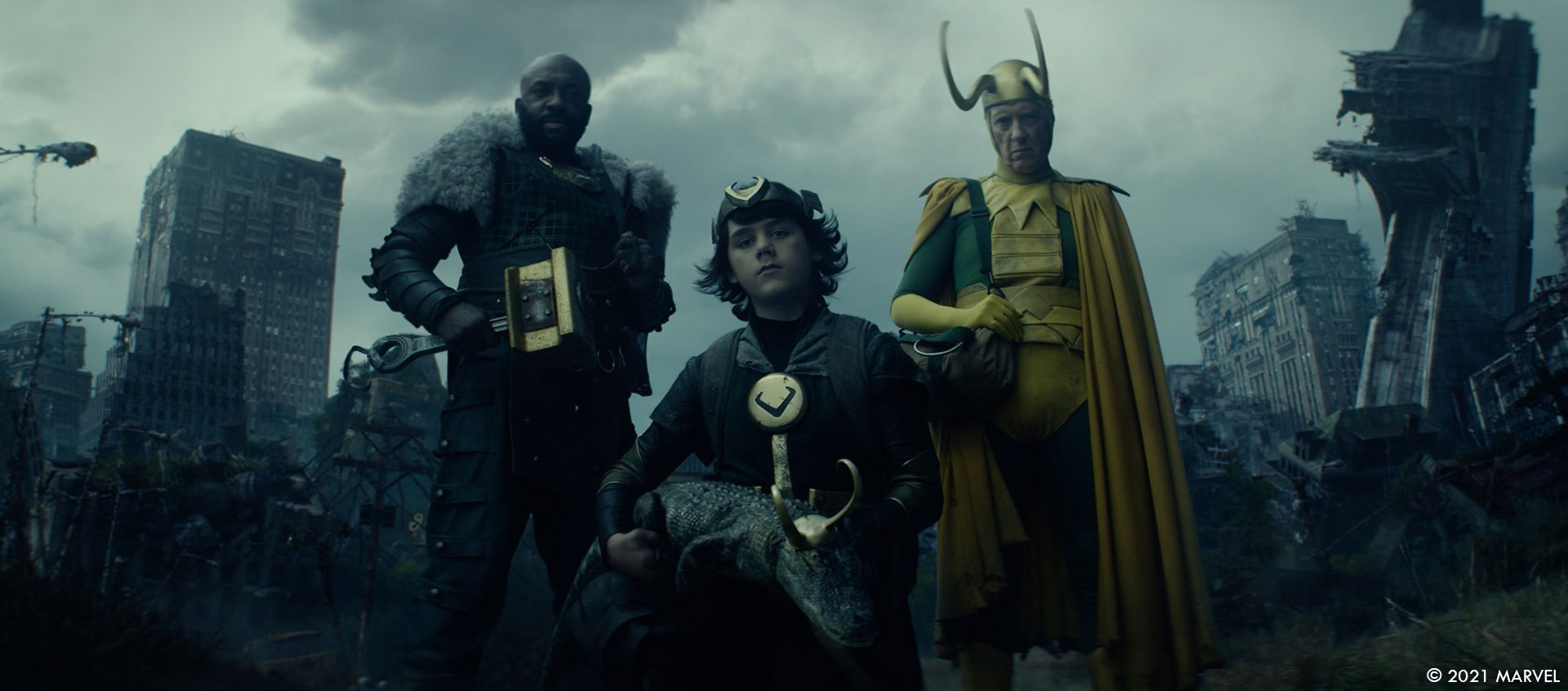
How did you organize the work with your VFX Producer?
DS // ILM’s work on Loki was primarily divided between sequences in episode 104 and 105 that take place in the Void and sequences in episode 101 in the Time Theater. As such, we divide the team into a Void team and a Time Theater team.
What are the sequences made by ILM?
DS // Within episode 101, ILM generated the Time Stage FX in the various Time Theater sequences in which Mobius is reviewing Loki’s past and future. This is essentially a recap of Loki’s story arc from his first appearance in Thor until his last appearance in Avengers: Endgame. The lion’s share of ILM’s work on Loki was in episodes 104/105 that take place in the Void. This work included the creation of the Void environment, Loki Alligator, Alioth, and all of the miscellaneous Void props and magic FX littered throughout the episodes
Can you elaborate on the design and creation of the Time Theater Hologram?
DS // The look of the Time Stage hologram was designed to fit with the somewhat retro aesthetic of the Time Variance Authority. Additionally, it was important to the director and studio that the look was not too overly complicated, and that we apply a subtle dimensionalization to the imagery. Lastly, the look needed to work with the limitation of being generated from legacy imagery from the previous films.
Can you tell us more about the animation work?
Dave Cripino (DC) // Our animation team, led by Jakub Pistecky, had an amazing time working on this show. Our work spanned parts of EP101, EP104, and the majority of EP105, and included all performances for Loki Alligator, Alioth, Void turkeys, as well as various digidouble and camera work.
For Loki Alligator, we began with character exploration to help director Kate Herron determine how anthropomorphized and intelligent he should be. We auditioned a wide range of personality performances through pose and motion tests, and then carried the more successful options through to sequence-wide blocking. We ultimately landed on a more photoreal and restrained performance, as it was important to the filmmakers that he walk the line between literal alligator and possible Loki.
The team studied video reference of alligators, including locomotion, behavior, and muscular flexion. Muscle tense and flex was keyframed, and a post-anim skin sim was layered on top for fleshier areas.
For Alioth, we collaborated closely with our FX team, but employed a more tandem workflow. Animators blocked out Alioth’s timing, staging, and performance which would then guide the simulations. The resulting sim would dictate what further anim refinement would be done to enhance clarity and staging needed per shot.
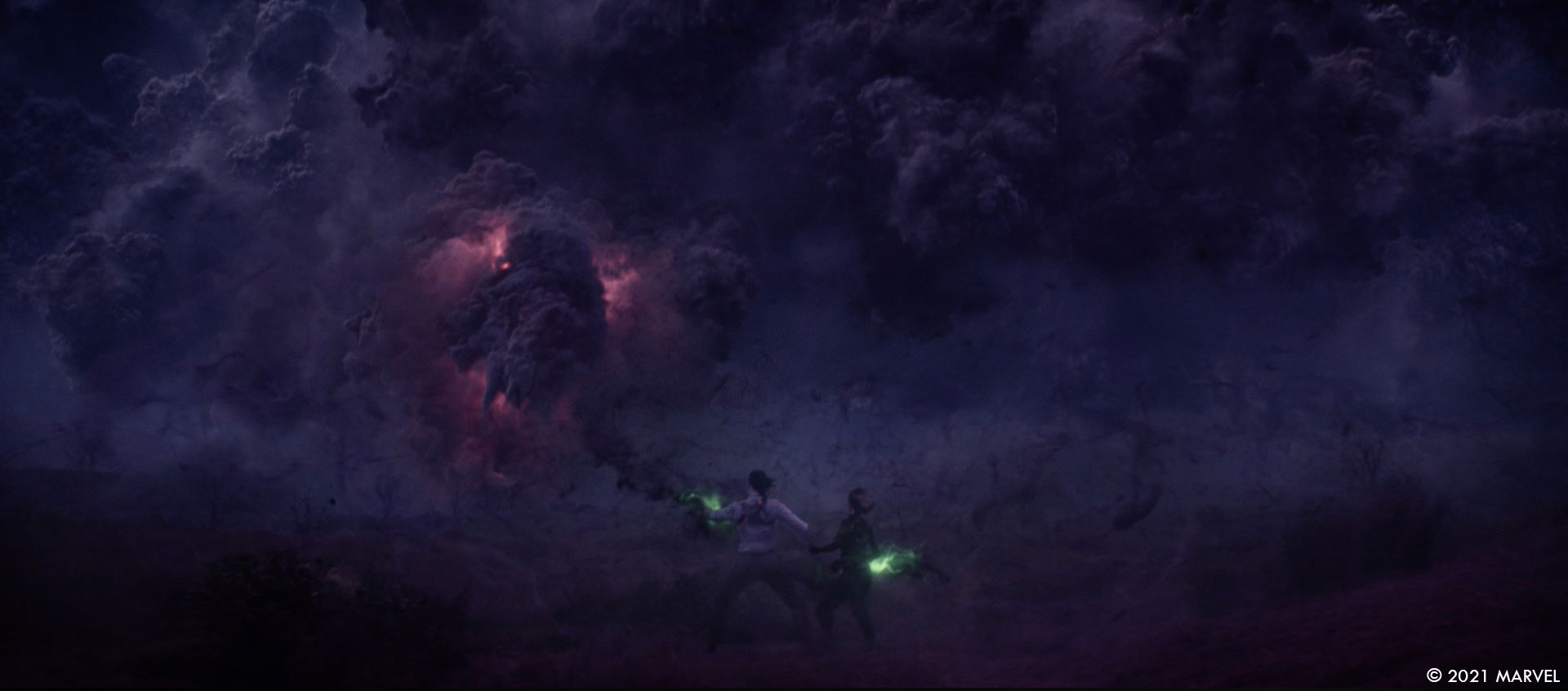
How did you work with the art department with regard to the Void environment?
Dan Mayer (DM) // Initial 2d concepts were shared with us and we began on early 3d tests to help give a sense of what it would be like to walk through the space. The design of the void evolved through back and forth work with the team at Marvel. Most of the exploration was related to how the fog should feel or how our terrain needed to convey the lost feeling the characters would have in the Void. Moody concept pieces can work great in a single image but as the needs of the episode evolved we adjusted in order to allow us to capture all the detail that we see in the big battle at the end.
Can you explain in detail about the creation of this massive environment?
DM // Most of the void is an endless rolling landscape that extends to the horizon, so time was spent to build vegetation libraries from grasses, to bushes and trees. We had photography from the onset portion of the void that we matched and created other unique items to fill out the landscape. Different options for volumetric fog were explored as we needed to give a sense of loss of direction, everywhere you look should feel lost as to where to head next. Within the void we built numerous items to show the history of past deleted timelines and created vinework and rust/age weathering effects to help show how the environment was reclaiming them.
The Void is full of various elements. Which one was the most complicated to create?
DM // The collapsed city shot at the head of the episode was a very large build. What started out as a city in the background soon became a centerpiece for the shot as we flew past ruined buildings to reveal the main characters. Everyone was excited about the detail we were able to achieve on that one. Minoru Sasaki did a great job heading that up. Asgard also presented a challenge to recreate from our ground vantage point and be integrated with the Alioth attack. It was great to be able to put an iconic city in a really unique situation and lighting environment.
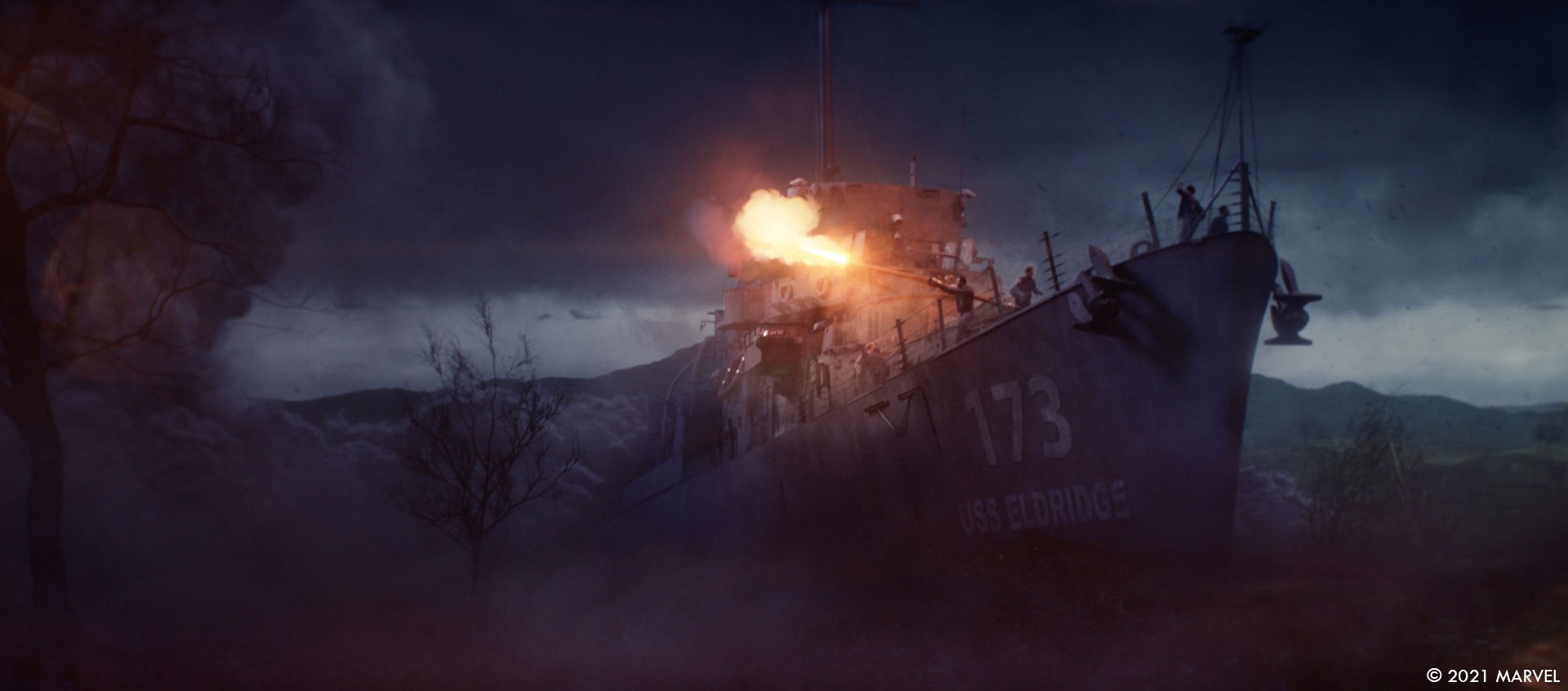
Did you use a procedural tool for the Void environment?
DM // Forrestpack was used for the scattering of vegetation and rocks along the landscape, and the landscape itself was built using procedural terrain generation that was then sculpted on to create variety. Asgard was also constructed with a lot of building instancing in order to populate all the districts.
Did you put any easter eggs inside the Void that we should know about?
DS // One of the most enjoyable aspects of working on Loki was the placement of easter eggs. By definition, the Void is a location where the TVA sends people, places, or things that are a threat to the sacred timeline. This essentially translated to a situation in which there were no limits on what we could place in the Void. The easter eggs are broken down into two categories. First is a collection of real world oddities. These included things like the Lighthouse of Alexandria, a prototype for a nuclear powered tank built by Chrysler in the 1950s, or the naval destroyer from the Philadelphia experiment. The second category of easter eggs were pulled from the Marvel Universe. These included things like the Thanos helicopter, the Dark Aster spaceship, a statue of the Living Tribunal, or Stark Tower with the Qeng logo.
Can you elaborate on the creation of the cloud monster Alioth?
George Kuruvilla (GK) // Our FX team led by Jiyong Shin, Matthew Hanger and Menno Dijkstra, worked on the development of the various aspects of Alioth. Alioth exists in various states like resting in the clouds, hunting, chasing, attacking and eating. Each of these involved various different accompanying FX. Alioth was simulated entirely using ILM’s proprietary GPU based solver called Plume. Some of the main challenges were that fluid sims by nature want to continue to expand and evolve based on forces and we had to find a way to preserve a certain look and compositional shape whilst being able to inject motion. We also had to maintain a balance between the base pyroclastic and the secondary wispy layers. The most challenging aspects of Alioth were his facial sims and maintaining the balance of definition, performance and internal lightning all through our volumetric simulation.
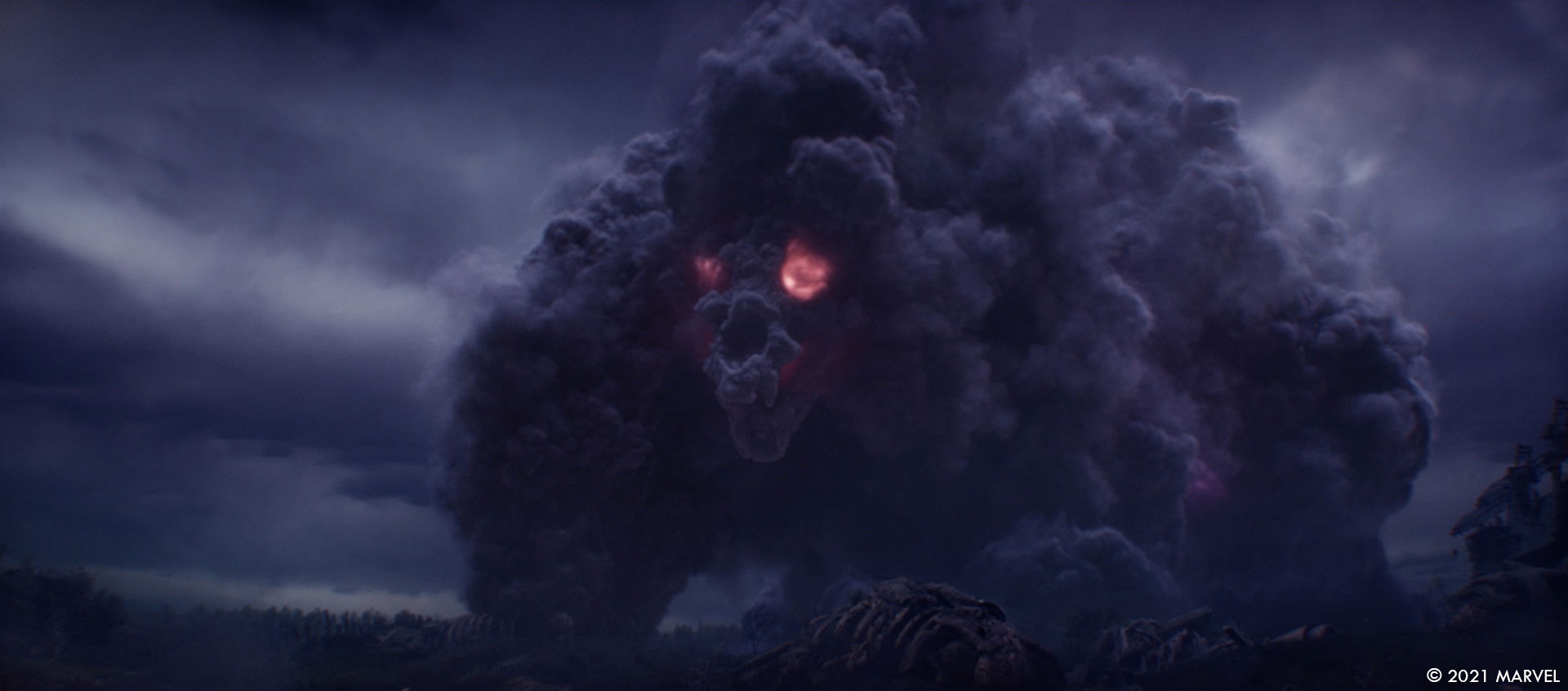
What kind of references and influences did you receive for it?
GK // We received references pertaining to different aspects of Alioth. These included pyroclastic and volcanic images specific to his body scale and texture, images of lightning for his internal lightning and volumetric natural phenomena reference for the various aspects of his movement. In addition, we had our art department assist with several Alioth poses.
How did you handle his animation and lighting challenges?
GK // Alioth being a creature made entirely of simulated smoke, made clear that the biggest challenge was trying to find a way to let our FX volumetric solvers do what it does best, in order to have the most natural and physically correct simulated motion and yet to be able to complete the storytelling and performance aspect of the character. Our animation team would start the process with driving the performance aspects of Alioth for both his body and his face/skull using geometry. This geometry data was then passed on to FX to drive the various FX volumetric simulations. Alioth was lit and rendered using Mantra in Houdini along with all the accompanying interactive renders to help integrate Alioth into the environment.
Can you explain in detail about the creation of Loki Alligator?
GK // In order to find an American alligator of the right age and size we had sent the director several image references. This process was also helpful to try and match the size to the on-set “stuffy” alligator. The methodology used for this build was to collect as many reference images as possible of American alligators of a similar age and size. The images were solved to build a basic 3d volume. We used texture to draw basic guidelines of the alligator’s scales from those images that were mapped to his body and this was in turn used as the guide for the sculpt. Even though an involved process to match every scale, tooth and nail to various bits of reference image in model, texture and lookdev, our team consisting of Jorge Gonzalez de Cossio, David Skorepa & Alex Liu took on the challenge to bring our beloved loki alligator to life.
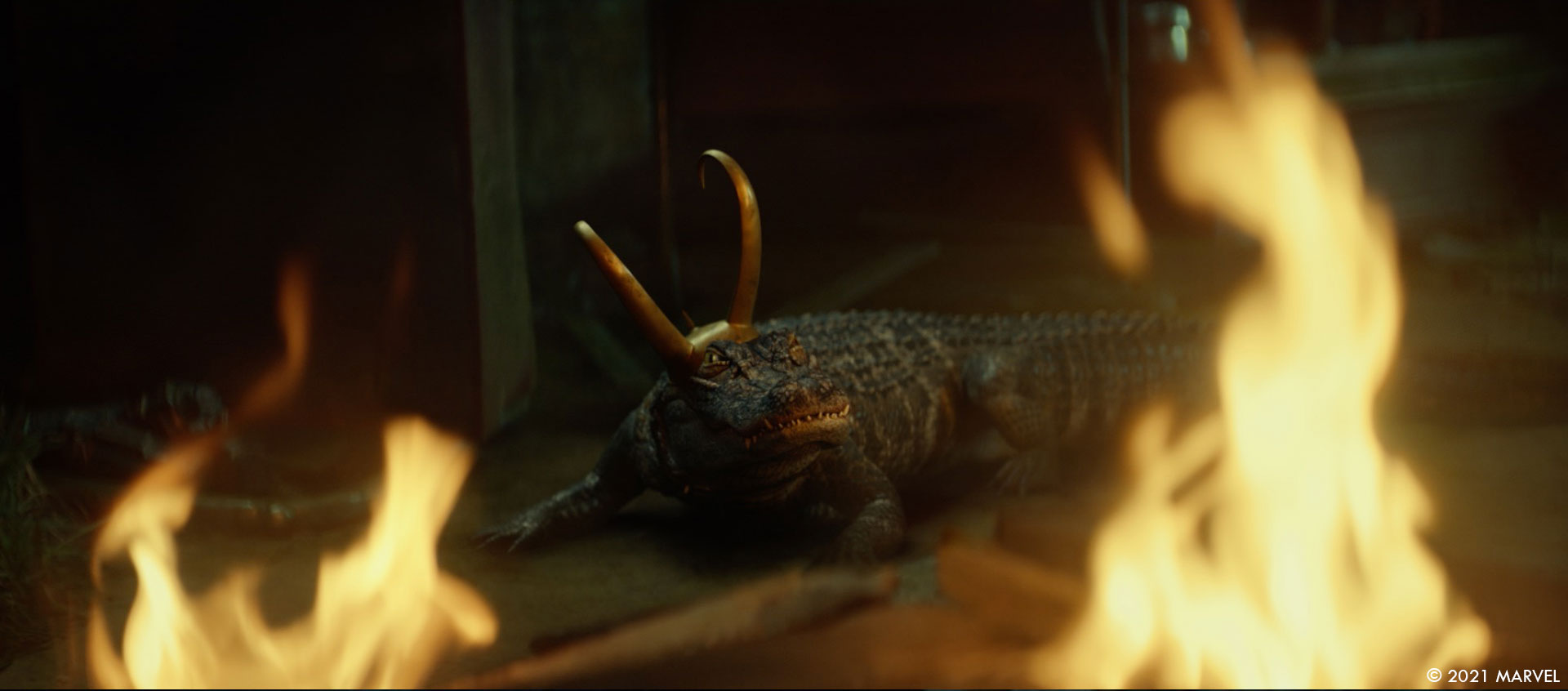
Can you tell us more about his rigging and animation?
GK // In terms of rigging, there wasn’t anything particularly unique compared to other quadrupeds. We just kept the skinning maps relatively sharp due to the nature of his rough skin, and that it shouldn’t deform over large areas (eg shoulders). We ended up adding some extra controls to manipulate the skin bulging especially around the neck and mouth which worked well for the animators in conjunction with the joint driven shapes. Facial shapes and eye blinks in order to make the alligator expressive were the most challenging.
How did you manage his specific skin?
GK // For the muscles, the main muscle sim gave the overall deformation of the skin, which was more pronounced on shots where he is moving or takes a certain pose. For some that it wasn’t as obvious we had to exaggerate it. The creature team, led by John Niforos ran a fascial skin sim on top of the muscles to help with the wrinkling. After seeing some of the first test renders, we ended up creating more shapes together with our model department in areas around the sides, neck and the belly to get a more detailed look which would catch the light better on those close up shots.
Which shot or sequence was the most challenging?
DS // The opening shot to episode 105 was by far our most challenging shot. In this shot the camera transitions from the TVA into the Void. We proceed to pass by a large destroyed portion of Manhattan before we land on our collection of Loki characters including our Loki Alligator. We end the shot as the Loki characters leave the frame and the camera booms up to introduce our cloud creature Alioth.
Is there something specific that gives you some really short nights?
DS // For various reasons the Time Stage hologram was probably the most high pressure body of work. Generally, monitor graphics or holograms can be deceptively difficult because there is no right or wrong. The possibilities are infinite. Even for a relatively subtle final look, it is very typical to have explored a wide variety of looks before finding the final aesthetic. The additional challenge for the Time Stage hologram was that it appeared in the first episode so it had an earlier deadline as a result. All of those factors combined to result in the Time Stage being one of our more short night inducing sequences.
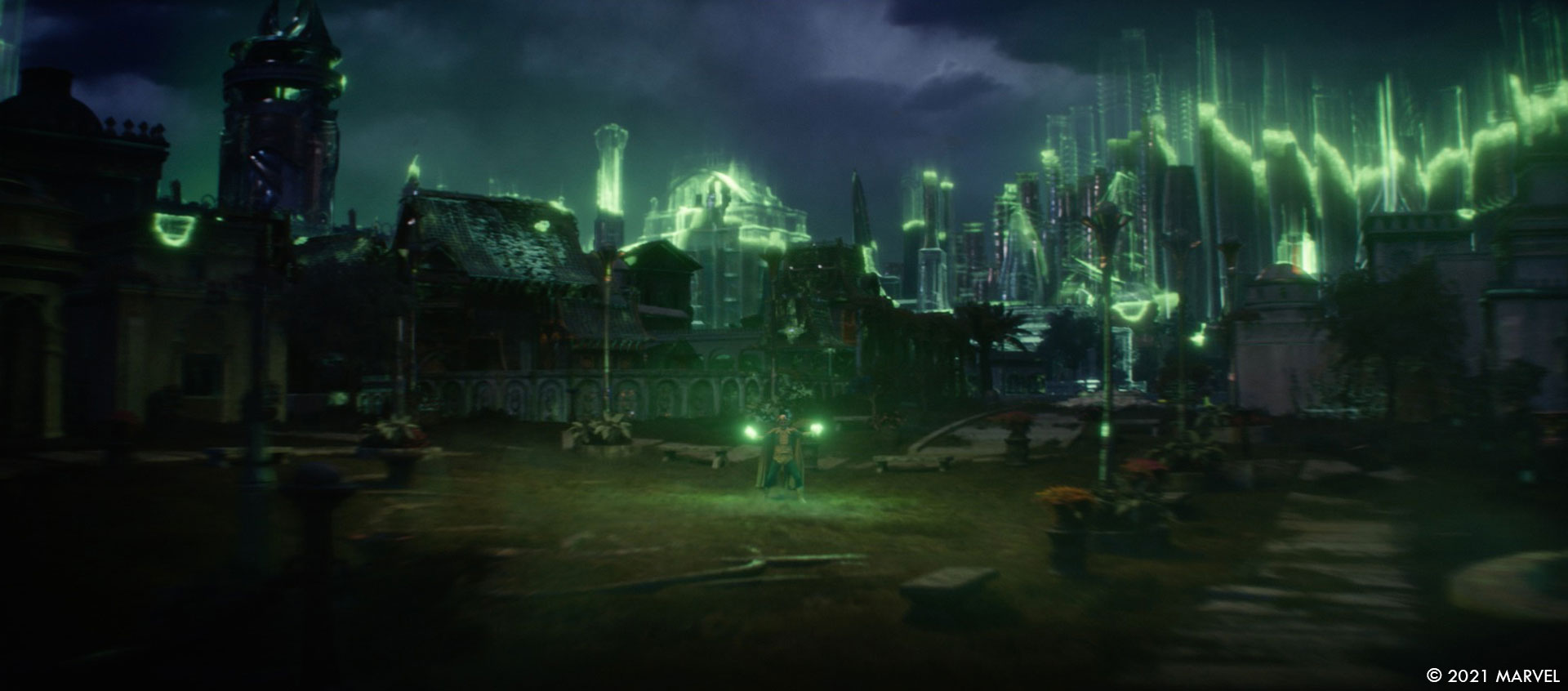
What is your favorite shot or sequence?
DS // My personal favorite shot is the opening shot to episode 105 which also happened to be our most challenging shot. It was one of the first shots that we started to work on and it was the last shot that we delivered. Moreover, the shot contains our Void environment, Loki Alligator, and Alioth.
What is your best memory on this show?
DS // Oddly my best memories of working on Loki have to do with the way that the team took on and delivered the project in a brand new workflow working from home. It sounds odd, but in some ways I feel like the team got to know each other in a new light via countless video calls. We were obviously not alone in this challenge, but it definitely feels like it created a bit of an extra bond between the team members.
How long have you worked on this show?
DS // ILM worked on Loki for just over a year.
What’s the VFX shot count for your team?
DS // ILM delivered a total of 481 shots distributed across episodes 101, 104, and 105.
What was the size of your team?
DS // There was a total number of 165 ILM crew members that worked on Loki over the course of the entire production.
What is your next project?
DS // Unfortunately we are unable to share the specifics of our next project.
A big thanks for your time.
WANT TO KNOW MORE?
ILM: Dedicated page about Loki on ILM website.
Dan Deleeuw: My interview of Overall VFX Supervisor Dan Deleeuw.
Disney+: You can now watch Loki on Disney+
© Vincent Frei – The Art of VFX – 2021




